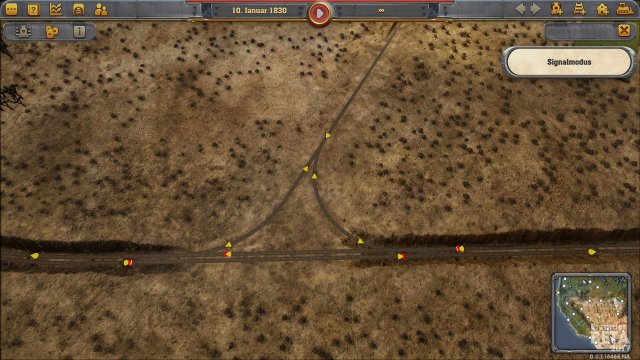
The signalling system in the game Railway Empire, will allow you to control the growing network of railway lines and allow the movement of many trains on the same sections. If you have played similar titles, such as Transport Tycoon, Train/Transport Fever or Mashinky, then the rules of signalling in this game are practically the same. However, there is one important detail to be mentioned.
Warehouses are a special type of stations. They do not collect resources from nearby production centers, nor do they transfer or collect products from factories. You can store resources or goods in them, which will then be picked up by trains.
This does not happen automatically. You have to choose the type and quantity of goods that will be stored in a given warehouse. If it is located near an intermediate station, it should be used to help reduce traffic, the number of pickup/destination points and to make the transport of goods more efficient.Warehouses will be useful in the later stages of the game, when cities need a large number of different products. This way, you can easily collect products in one place and then distribute them to the surrounding regions.
Grey cubes. Grey Cubes is a modern variation on the brick breaker type game, based on real-time physics and three-dimensional gameplay (not just 3d look)。Grey Cubes是Mac App Store游戏分类下的热门.

You will save on the construction of numerous stretches of tracks, as well as on stations and trains.How to use Warehouses? One of the more effective methods is to build such a structure somewhere between a cluster of different production centers and a city. Some of the connections will only transport resources to the warehouse, and several other trains will run to the neighbouring cities.
This way, you will reduce traffic on the tracks and the number of trains. The trains traveling between such a warehouse and a city will select resources themselves, taking into account the city's needs. If necessary, they will fill their railcars to the brim with grain or fill some of the wagons with cattle, wood and vegetables. You can also bring goods to cities from such stations, but not passengers or mail. Trains take the resources from the production centers to the warehouse (blue arrows), and separate connections carry them to the city (red arrows). Thanks to this, the station in the city is not besieged by an excess number of trains.As you can see in the illustration above, the warehouse can be used in practice to improve the efficiency of your network. There are many production centers in the area, which provide resources that are transported to the warehouse ( blue arrows).
Two freight trains run in the short stretch between the warehouse and the city. Of course, you can create direct connections and dual tracks or sidings, but in the event of a mechanical failure, the entire line will become useless. Here, if the train carrying resources is delayed, it will not affect the work of the trains which are running to the city. They will simply load the collected surplus of resources or other cargo.
In the example above, I chose the demanded resources for the nearby city, but the next step is to connect the warehouse to another city. This way, I will not be forced to create separate connections between production centers and the new city, I will simply create a new connection with the warehouse.To sum up: Thanks to the warehouses, you will improve the efficiency of transport, there will be less traffic on the tracks, and you will have more control over the trains. However, you must build them to either support large cities or a large number of small towns.